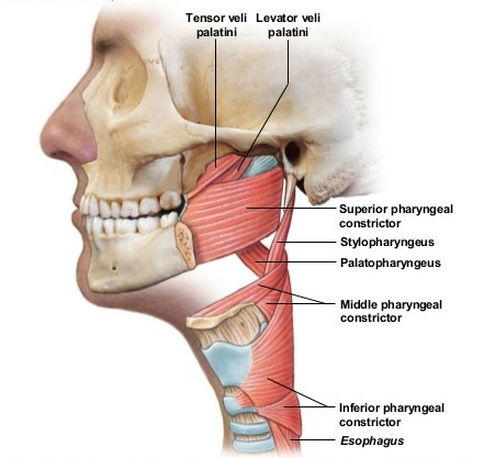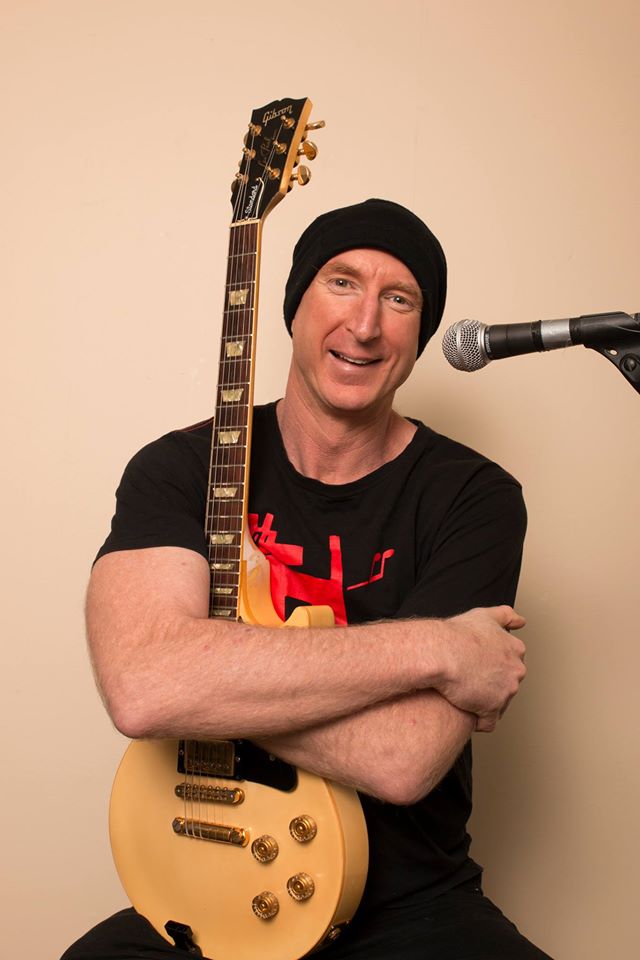Hi everyone, this blog is going to tackle the topic of how our hearing works and why our ears can trick us into thinking that our singing voice sounds better than it actually is! Hence the often heard exclamation “I don’t really sound like that do I”?
If you watch TV talent competitions, I’ am sure you’ve witnessed one or two train wreck singing auditions? You know the ones where the hapless singer is so convinced that they are the next big singing talent etc. Typically the singer struts into the judging room and exudes huge amounts of confidence, only to be shot down in flames during their audition by the judges!
The first response from the contestant is usually wide eyed astonishment that the judges don’t recognise their singing talents. “OMG what do you mean I cant sing”? I’ve heard me sing plenty of times I sound amazing ! At this point the judges usually share some painful truths, like Dog that was really bad, or that was pitchy, etc. The contestants are often so unprepared for these comments that they storm off the stage vowing to go it alone and become a mega star on there own! Its not until the contestant finally gets the opportunity to view the play back of their audition that they finally hear an accurate representation of how they really sound when they are singing. So why do our ears play tricks on us? Why dose our own voice sound sweeter and richer to our own ears?
If you’ve ever heard a recording of your own voice – on a voice mail or from a family video, etc, You will already know that the sound you hear in your head when you speak or sing is completely different to the sound that is heard by everyone else in the room. Why is that, and why do we tend to prefer the voice we hear in our heads?
For most people, there are few things that are more painful than hearing a recording of their own voice. We often don’t sound like we think they should. The sound captured from raw recordings usually contains more treble frequencies and the actual sound of the voice is thinner, higher and doesn’t match up with how we sound in our own heads!.
So, are our ears playing tricks on us? Maybe the microphone and recording is wrong?
Well unfortunately the raw recording doesn’t lie! The way we think we sound isn’t how we really sound to everyone else.
How we hear and perceive our own voice is down to how the sound waves travel through our inner ear and how our ears interpret the additional internal vibrations that are bouncing around our chest cavities and inside our skulls
Every sound we hear—cars driving, bees buzzing, people talking, and audio recordings—can all be attributed to the waves of pressure moving through the air. Our outer ears “pick up” these sound waves and funnel them into our head through the ear canal. They strike the ear drum, which starts vibrating, and those vibrations travel to the inner ear, where they’re translated into signals that can that can be sent via the auditory nerve to the brain for interpretation.
RESONANT VIBRATIONS
The inner ear doesn’t just get stimulated only by external sound waves coming down the ear canal. The ear also picks up on vibrations happening inside the body (resonance), and it’s a combination of these two things that makes up the sound you hear when you sing and talk.
When you speak, vibrations from your vocal cords resonate in your throat and mouth, and some get transmitted and conducted by the bones in your neck and head. The inner ear responds to these just like any other vibrations, turning them into electrical signals and impulses sending them to the brain. When you speak, your inner ear is stimulated both by internal vibrations in your bones and by the sound coming out of your mouth and travelling through the air and into the ears.
This combination of vibrations coming to the inner ear by two different paths gives your voice (as you normally hear it) a unique character that is not present in other conducted by air sounds, In particular, your bones enhance deeper, lower-frequency vibrations and give your voice a fuller, bassier quality that’s lacking when you hear it on a recording.
“When you hear your own voice as you talk, you’re really hearing multiple sound sources at once,” You’re hearing the sound that’s coming out of your mouth,. but you’re also hearing the sound bouncing around inside your own skull, which is conducted by your flesh and bones directly to your inner ear.”and the vibrations or resonance that is been amplified in the resonant spaces present in both your body and head. As singers, this is particularly useful because with practice we can learn to produce additional body and head resonance (vibrations) to colour our voices also referred to as improving our mix!
Flesh, (muscle tissue) etc, is better at transmitting low frequencies than higher ones, which makes you think your voice sounds lower than it does to other people.
How does my hearing work? Skip this bit, if you dont want to delve deeper into the science of how hearing works and how to prevent hearing loss)
Human Inner Ear
The outer part of the ear (called the pinna) channels sound travelling in the air into the ear canal. Some higher pitch sounds are enhanced by the shape of the ear canal as they reach the ear drum. Sound is transformed into mechanical vibration at the ear drum.
The eardrum is attached to a chain of three hearing bones that act as a lever enhancing sounds, while transferring the signal through the middle ear to the inner ear. The third bone in this series of middle ear bones is called the (stapes), and it is attached to the oval window, a thin tissue covering and entry point to the fluid-filled inner ear (the cochlea).
The cochlea is a snail-shaped tube within the skull that contains sensory hearing cells. These sensory cells are situated on a flexible membrane tissue – the basilar membrane. When the oval window vibrates the basilar membrane and sensory hearing cells are displaced.
Two of the important sensory hearing cells are the outer hair cells and the inner hair cells. Outer hair cells act like a biological amplifier/attenuator, boosting soft sounds and dampening loud sounds. Inner hair cells transfer sound information to the auditory nerve.
The auditory nerve transfers sound information to various brainstem and auditory cortex regions in the brain so that information can be processed and sounds can be interpreted and identifed.
Common Problems with our Hearing System
Conductive Hearing Loss
An excessive build-up of ear wax in the ear canal can reduce sound transmission and hearing in an ear. An Ear wax blockage is best treated by an Ear Specialist, Ear Nurse Specialist or trained Audiologist. Gently swabbing the inner ear with a cotton bud or similar made for purpose item can help you to reduce the wax build up. Note that swimmers are typically prone to large build ups of ear wax, if your a singer and you swim as part of your fitness regime i recomend that you invest in some wax ear plugs and a swimmers cap to keep them firmly in place.
The presence of fluid behind the ear drum (otitis media or ‘glue ear’) can cause hearing loss by reducing movement of the ear drum and middle ear hearing bones. Although this condition usually resolves within ten weeks without treatment, advice should be a General Practice physician.
Otosclerosis is the abnormal growth of the hearing bones in the middle ear. Usually the stapes becomes fixed to the oval window and interferes with sound transmission into the inner ear. Otosclerosis is sometimes treated by surgery or through the use of hearing aids.
Singers that are experiencing some form of hearing loss either through a genetic condition or through enviromental factors can learn to adjust and use body referencing* (the system of determining pitch through closely monitoring the body resonace) ive worked sucessfully with a number of singers with noticable hairing impairments and taught them to how to improve their ability to reference picth using this Particular method.
Sensory Hearing Loss
Inner ear sensory hearing cells may be malformed or become damaged.
Outer hair cells, deteriorate over time so that only about 70% are intact by 70 years of age. This can result in reduced hearing of high pitch sounds. I recomend that anyone who regulary exposes there ears to loud sound sources over 70db should invest immediately in hearing protection devices. Once the hairs have been bent over or effectively damaged hearing loss will ensue!
Early signs of hearing loss include experiencing high pitched ringing sounds in your ears, especially apparent after atending loud concerts etc!
If your a singer and or musician you dont need me to tell you how important your hearing is to enable your ability to sing in key and perform on pitch!
(Authors note) I have been singing and performing for over thirty years now with loud bands, and my hearing is about 98% entact! My hearing has been preserved because i follow two basic rules, every reheasal i use ear plugs ( i use potentiated ear plugs these are special ear plugs that are designed to reduce noise levels but still allow you to hear a full range of high ,mid,bass frequencies). Failing that ordinary foam ear plugs from the chemist, or from industrial health and safety shops are a must for loud rehearsals! Heres an idea if your practising that loud ask the band to turn down (too many musians end up with permanent ringing in their ears also know as tinnitus). 2nd rule always wear ear plugs, or other hearing protection devices at Nightclubs and music concerts or anywhere where you are continually exposed to loud sound sources of 70DB (decibels )or greater. I have even been known to disapear into a toilet and grab some toilet paper and fashion some make shift ear plugs for impromtu events where there are excessive amounts loud music or loud environments! Ie stock car racing etc.
Exposure to excessive noise will accelerate damage to outer hair cells causing a greater degree of hearing loss!
Damage to inner hair cells can occur due to excessive noise, and also from ear disease or degenerative conditions. These inner hair cells also contribute greatly to our sense of body balance, so there are multiple reasons to safe guard your hearing!
Taking precautions now to preserve your hearing may seem very un-rock n roll . But its the only way to ensure that you can enjoy a life time of hearing the full range of the frequencies that make up our musical spectrum!
If you choose to ignore the above advice and continue to expose your ears to excessive loud noise and unfiltered noise abuse! Then the likely hood is that you will investing in a hearing aid in the near future (no BS that’s telling you like it really is).
Hearing aids are most effective at compensating for reduced function of outer hair cells, which is the most common type of permanent hearing loss. If the function of inner hair cells is very poor then a cochlear implant may provide better hearing ability. How ever many types of hearing aides artifically amplify sounds and they do not pick up the full range spectrum of sound frequencies that our ears can detect, this means the sound is metallic sounding and very atrifical / not ideal for musicians who rely on their ears to make a living.
Drop me a line if you have any questions or want to learn more about the system of using body referencing* to improve your sense of pitch.
Rapid Vocal Results come through a combination of hard work and understanding the science of which vocal exercises work best to stimulate chord growth for your voice! Your hearing is super important dont take it for granted if you really want to reduce the time it takes to grow your voice you need to be able to hear and feel when your vocal chords are vibrating fully this way of vocalising is the fastest way to stimulate the growth of your vocal chords.
Better singing everyone.










